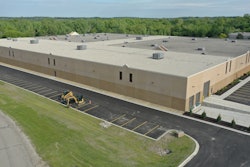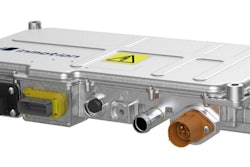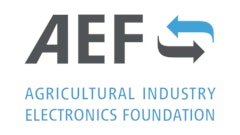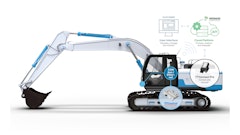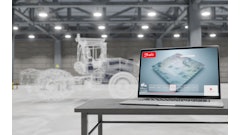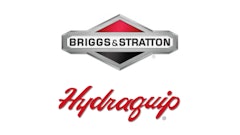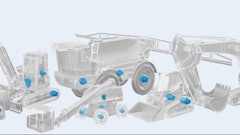
The U.S. Bureau of Labor Statistics predicts 4% growth in construction equipment operator jobs from 2023 to 2033. Meanwhile, the Associated General Contractors of America reports that a staggering 94% of construction firms are having trouble finding qualified workers. Skilled equipment operators consistently rank among the hardest positions to fill. This trend isn’t unique to construction. Qualified heavy equipment operators across industries are becoming harder to find.
To address this challenge, original equipment manufacturers (OEMs) have been moving the skill an operator would typically have onto the machine in the form of operator-assist and semi-autonomous functionality. These software-enabled functions — boom positioning and kickout, auto dig, auto dump, bucket shake and self-leveling, to name a few — allow novice operators to control a machine as deftly as their colleagues with decades of experience. The result is improved precision, productivity, and safety on the jobsite.
Beyond addressing skilled labor challenges, software features are increasingly key to differentiating machines and enabling customization. Furthermore, while efficiency improvements at the component level are becoming incremental, significant advancements are possible at the systems level. This requires sophisticated software to control and coordinate component interactions.
The importance of software in today’s machinery cannot be understated. In fact, over the next decade, the number of lines of code in heavy equipment software is set to skyrocket — as much as 30 times, according to some estimates. It should come as no surprise then that software is quickly becoming the largest technical investment and competitive advantage in off-highway machine development.
Software differentiates machines, but what differentiates machine software? Read on for a look at the trends in today’s software systems as well as what’s coming in the future.
 Danfoss
Danfoss
Off-Highway Machinery Software
Large OEMs tend to have staff developers and proprietary software platforms. Those OEMs without in-house capabilities usually rely on platforms developed by third parties, such as hydraulics or electronics suppliers. This review will focus on these latter, non-proprietary systems.
In recent years, the focus of machine software systems has changed. There has been a shift from closed platforms to open platforms, and system capabilities have expanded. Today’s most sophisticated software platforms are system integration tools. They provide advanced programming capabilities and allow programmers to use a single tool across multiple steps in the machine system development cycle, such as simulation, display development, diagnostic and service application development, and code control and review.
This platform flexibility and system integration approach reduces development time and costs while facilitating a more collaborative, streamlined development process.
Functional safety and cybersecurity have also grown in importance, with leading platforms featuring certification or compliance in these areas.
 Danfoss
Danfoss
Platform Flexibility
Open platforms support multiple programming languages, including graphical and text-based languages, offering several benefits. First, they allow OEMs and systems integrators to import and leverage their existing code base and programming expertise, minimizing the learning curve and accelerating development. Open platforms also ease recruiting by enabling businesses to hire programmers with backgrounds in a wider range of languages. The programmer can develop in their preferred language and easily link code blocks within the platform. This flexibility simplifies management for systems integrators with customers using different languages and minimizes the costs of switching languages. Ultimately, it enables optimal resource use, matching skillsets to tasks and maximizing development efficiency.
Another factor associated with flexibility is a software tool’s ability to accommodate different user types and ways of working. Platforms based on graphical languages typically enable users to work at multiple levels. For instance, a user could piece together application and subsystem function blocks or manually edit code to tune a machine to a highly specific need.
Tools that incorporate graphical programming — essentially, a drag-and-drop visual interface for application development — offer significant ease-of-use advantages. These platforms’ preprogrammed function blocks and application libraries simplify programming, even for those with limited experience. Machine designers who can draw a diagram to visualize how they want their system to work can use graphical development environments to build that system. And machine operators can see how they want the machine to function translated into software.
Functional Safety
To sell machines in global markets, OEMs need to prove compliance with various standards. Functional safety certification is today required by many regulatory authorities. The use of software development tools that are functional safety certified (IEC 61508-3) can save a significant amount of time.
Functional safety can only be achieved with a holistic perspective on system and component design. Attention must be paid to machine design and the component hardware design, but the heaviest lift is software. Implementing safety-critical algorithms will require significant time with assessors and auditors. Certifying bodies will oversee the entire development process, monitoring how requirements are tracked, translated into application functions, integrated, and tested. This can be done from scratch, but if the full chain of software development tools and hardware are already recognized by a certifying body, OEMs can significantly reduce the effort involved.
 Danfoss
Danfoss
Cybersecurity
When it comes to machine cybersecurity, it is no longer wise to count on the low likelihood of a breach as a means of protection. Today, more people understand how machine control systems work, including how they are calibrated and reprogrammed. Someone with the right skills and the right motivation could modify the system and compromise its safety. Connectivity and over-the-air programming increases the risk by orders of magnitude.
Again, software is the focal point. There are good methods in the industry to protect machine systems, but it requires a structured approach, applying the best security practices, and validating the solution to standards, such as IEC 62443. Ensuring your system component supplier has proven secure solutions is the first line of defense against attacks. Mature suppliers will have a cybersecurity plan with elements such as inclusion of IEC 62443 requirements in product development processes, implementation of in-house testing capabilities, integration of cybersecurity testing tools into their tool chains, and product cybersecurity certification goals.
Future-Proof Software for Future-Proof Machines
In the future, software platforms will introduce or expand artificial intelligence and machine learning. These capabilities will improve developer efficiency and empower end users with more data and predictive maintenance insights about their machines. Connectivity and autonomy solutions will also advance, and there will be a continued focus on cybersecurity and functional safety, given the growth of machine connectivity.
OEMs usually consider a number of criteria in selecting a machine component supplier: future-ready hardware that has the right features, environmental specifications, reliability, cost, and availability, among others. But it’s important not to overlook software. A platform’s flexibility, systems integration approach, and maturity in areas such as functional safety and cybersecurity directly impact machine development time and development costs. As software-driven features increasingly differentiate mobile machinery, software has become the most critical element to future-proof.





